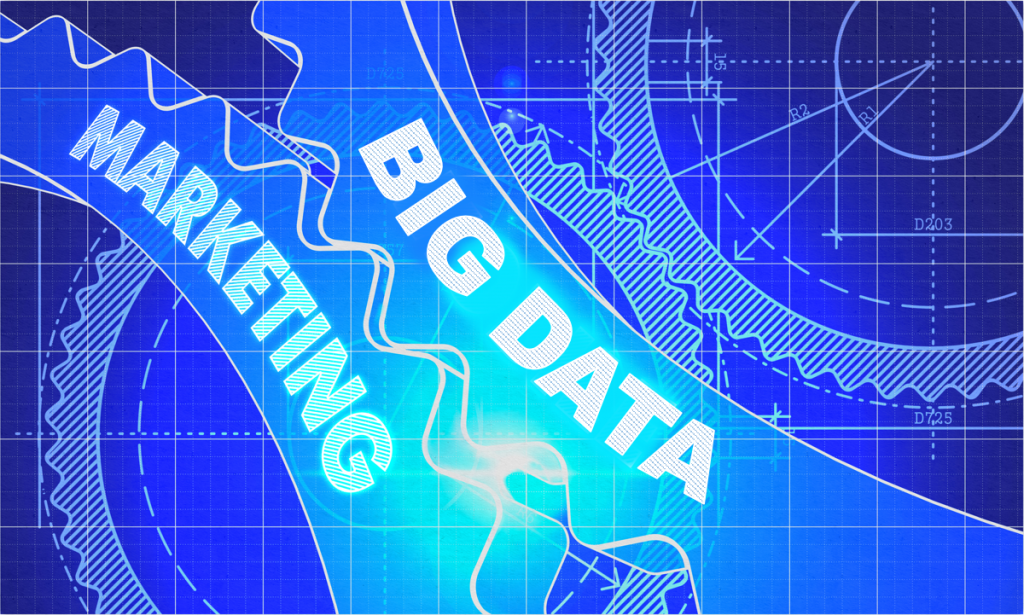Data has always been important to marketers. John Wanamaker, the late department store magnate, once stated, “Half the money I spend on advertising is wasted. The trouble is I don’t know which half.” Like everyone interested in marketing, Wanamaker knew he could get more bang for his buck if he had better information about who was being reached through advertising. Several years ago, the Global Data & Marketing Association (GDMA) and the Winterberry Group, with help from MediaMath, confirmed “data has become the pillar of how businesses practice marketing, purchase advertising, evaluate consumer media and deliver customer experiences.”[1] Their survey found, “Nearly 80% of global survey respondents believe customer data is critical to their marketing and advertising efforts.” Omer Artun (@omerartun), Chief Science Officer at Acquia, asserts, “Marketers are in the business of creating relationships with people and learning how to meet human needs. However, people are so uniquely complex that trying to understand the values and desires of individual consumers becomes impossible when dealing with millions of potential buyers around the globe. Today, businesses spend countless hours simply collecting, validating and organizing datasets before any real analysis can even begin.”[1] Kazu Takiguchi, founder and CEO of ad creative platform ReFUEL4, adds, “If human teams are to stay competitive, they need to become more data-driven and find a way to accelerate creative projects that speak to their target audience on a personal level, based on hard data about what is catching eyeballs.”[3]
The importance of data
The World Economic Forum has declared data to be a valuable resource in the same category as oil or gold. Data is also gold for marketers. Valentin Saitarli, Managing Director at Exclusive PR Solutions, explains, “Due to technological accessibility, using smartphones, surfing the web and installing numerous applications, we might seem to be overwhelmed with information. Its flow seems to never stop. But if we pursue these processes consciously, we will conclude that the real gold is the data we, the users, generate.”[4] Like prospecting for gold, finding the nuggets in big data takes work. First, you have to find the right data. Jes Scholz (@jes_scholz), an International Digital Director at Ringier, explains, “The very best AI tools and talent in the world will not deliver results if you are missing the most critical component for machine learning — high-quality data to inform the learning algorithm.”[5]
If a company can obtain the right data, and analyze it using the right methods, the benefits can be significant. Branding consultant Victoria Greene (@vickyecommerce) suggests a few ways big data can be used to improve marketing.[6] They are:
1. Churn Prediction. Greene explains, “Churning refers to users leaving your platform and not coming back. It can apply to mobile apps, email newsletters or an ecommerce store. With Big Data, you are able to analyze trends among your users and make accurate predictions as to when a particular user is at risk of churning.”
2. Personalization. “One of the most useful aspects of Big Data for any business,” Greene writes, “is its potential to provide personalization at-scale. That means you can tailor your marketing to each specific user, while running a large-scale, international campaign. The first factor in determining how much you are able to personalize your marketing is the amount of information you have on a user.” Artun adds, “Once you’re working with a cleansed, deduplicated, stitched set of customer data, you can use machine learning to segment customers based on attributes like these: Value; life cycle; behaviors (one-time shoppers, store preferences, frequent returners); needs or product based attributes; [and] demographics.” Cognitive computing solutions, like the Enterra Shopper Marketing and Consumer Insights Intelligence System™, are able to leverage all types of consumer data to provide high-dimensional consumer, retailer, and marketing insights.
3. Conversion rate optimization (CRO). According to Greene, “Conversion rate optimization is a discipline premised on testing, and data has always been at the heart of it. But data and Big Data are two different beasts. Big Data can provide insights about the best way to drive a sale for a specific customer based on the very limited information you have on their journey to this point. This can take the form of better recommendations, flash sales, or optimized wording of your product descriptions.”
4. Content timing. “In ecommerce,” Greene writes, “your audience is global, so there will never be one perfect moment to publish your content to everyone. Staggering times for different time zones is an easy first step, but with Big Data, we can do better than that. We can learn what times are the most effective for each type of user and deliver the content at the exact moment that it’s most likely to lead to a conversion.”
The staff at the Innovation Enterprise insists marketers who “cleverly use big data operations … to spice up their advertising efforts, understand that the basis of tomorrow’s advertising industry will be the widespread collection and clever utilization of consumer data.”[7] They add, “If advertisers want to successfully peddle their merchandise to the public, they’ll need to know down to the last detail what that public wants, when they want it, and how they expect it to be delivered right to them.”
Finding your best customers
The Innovation Enterprise staff predicts, “Tomorrow’s markets will be found by algorithms. … As the global marketplace grows more cluttered and dizzying by the day, human workers will increasingly have to rely on the help of algorithms to detect new crops of potential customers. … Those who refuse to invest in algorithms or big data operations themselves will soon find themselves outgunned when juxtaposed against the competition.” Big data is not only useful for helping identify new customers, it’s valuable for identifying your best customers. Laura Patterson (@LauraVEM), President and founder of VisionEdge Marketing, explains, “Just as the universe comprises a wide variety of types of stars, so does your customer base. And like the universe, where some stars shine brighter, some of your customers are better than others.”[8] Big data and advanced analytics can help find your best customers. “Before you begin exploring and interpreting your data,” Patterson writes, “you need to know what a bright star customer looks like: You need to know what constitutes an ideal customer. Once you know whom you are targeting, you then need to understand where they reside and why they buy. Then you need to know these customers’ engagement preferences.” Although Patterson states you need to know what an ideal customer looks like “before you begin exploring and interpreting your data,” the fact of the matter is data can help you understand what an ideal customer looks like.
The Innovation Enterprise staff insists marketers who ignore the potential of big data will soon become anachronistic. They explain, “Big data and algorithms will work hand in hand to change advertising as we know it well into the future, but it’s a simple matter of fact that the era of big data has begun. While some are still sating their worries by insisting they still have plenty of time to brush up on these technologies down the line, it’s imperative to start learning about big data operations and how they’ve changed the face of advertising right now if you don’t want to get left behind in the market.”
Footnotes
[1] Laurie Sullivan, “Data Becomes ‘Pillar’ Of Advertising In 2017,” MediaPost, 1 February 2017.
[2] Ömer Artun, “How Will AI and Machine Learning Transform Marketing?” Acquia Blog, 12 May 2020.
[3] Kazu Takiguchi, “What Human Teams Can Learn From Machine Learning Marketing Algorithms,” AdWeek, 19 April 2018.
[4] Valentin Saitarli, “Data, Data, Data: Despite The Demand, Strategic Marketing Is Still Necessary,” Forbes, 30 December 2019.
[5] Jes Scholz, “An Introduction to Artificial Intelligence in Marketing,” Search Engine Journal, 29 April 2020.
[6] Victoria Greene, “What Big Data Can Bring to Your Retail Marketing Strategy,” Convenience Store News, 28 March 2018.
[7] Staff, “How big data and algorithms will define advertising,” The Innovation Enterprise, 31 August 2018.
[8] Laura Patterson, “How to Use Data to Reveal Your Brightest Star Customers,” MarketingProfs, 14 March 2018.





